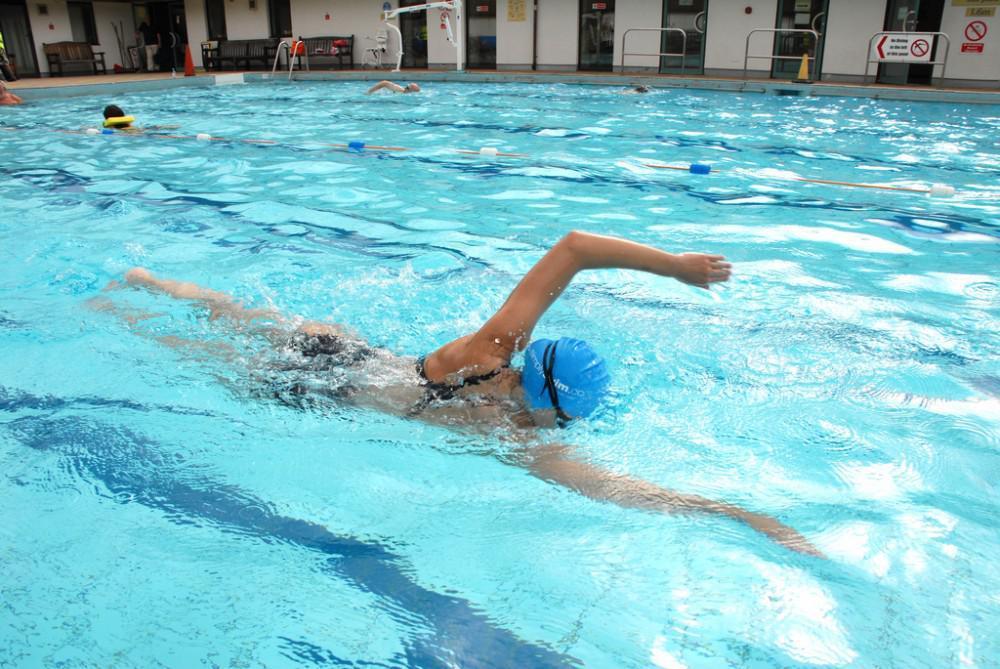Swimming is often recommended for patients suffering from lower back pain. The benefits over a land based fitness programme are obvious: the non-impact, weightless environment removes pressure from joints allowing associated structures to relax and compression on the nerves is reduced. Swimming also helps increase blood circulation, thereby increasing nutrient and oxygen supply to areas of damage, aiding the healing process.
However, before you grab those shorts or costume you need to be aware that swimming with poor technique can exacerbate existing back problems. Muscles in the lower back area can become hyper extended due to poor posture whilst swimming. Particularly common is swimming breaststroke with the head held high up out of the water putting sustained pressure on the lower back. Front crawl is an ideal stroke to master for those looking to prevent undue stress on the lower back.
It is essential, however, that the stroke is technically correct so that the movement through the water is smooth. Unnatural awkward movements in the water can easily damage tissue through the back. Top tips for mastering front crawl are:
- Think straight lines. As you swim you should imagine that a view from the side (underwater) would show your body position parallel to the water surface; this is achieved by ensuring the face is submerged with the water, the abdominal muscles pulled in and up, and the glute muscles engaged. You should also imagine that a birds eye view of you swimming would show a straight line in the water – i.e. no lateral deviation or snaking.|
- Roll with it. As you breathe to the side you must ensure this is timed with the roll of the body. Lifting the head or excessive twisting will at best slow you down, and at worst cause damage to cervical vertebrae. Be sure to rotate the head only within the axis of the body keeping the head down as much as possible.
- Work towards bi-lateral breathing (alternating the sides to which you take a breath). This helps to ensure you have a balanced front crawl stroke.
- Equip yourself. Goggles are an essential tool but equally short training fins are extremely useful for mastering the correct body position in the water. In more severe cases of back pain using a training snorkel can help reduce the awkward movement of the neck when taking breaths.
We hope you will enjoy your swimming!
